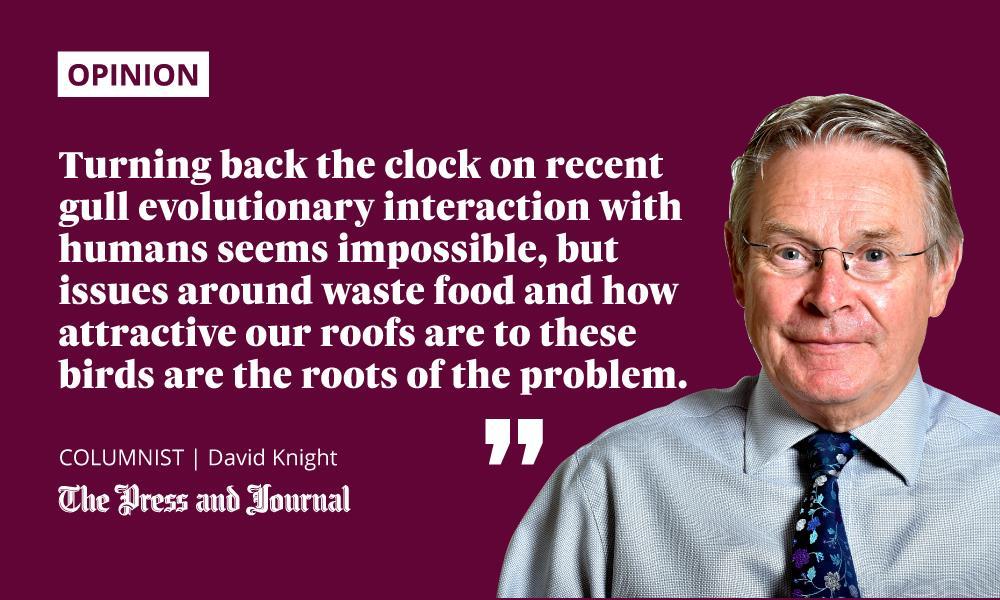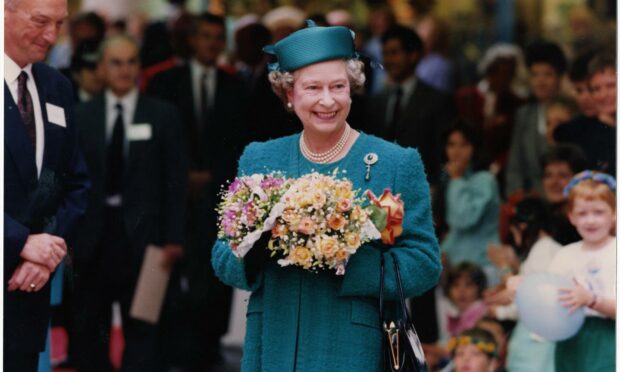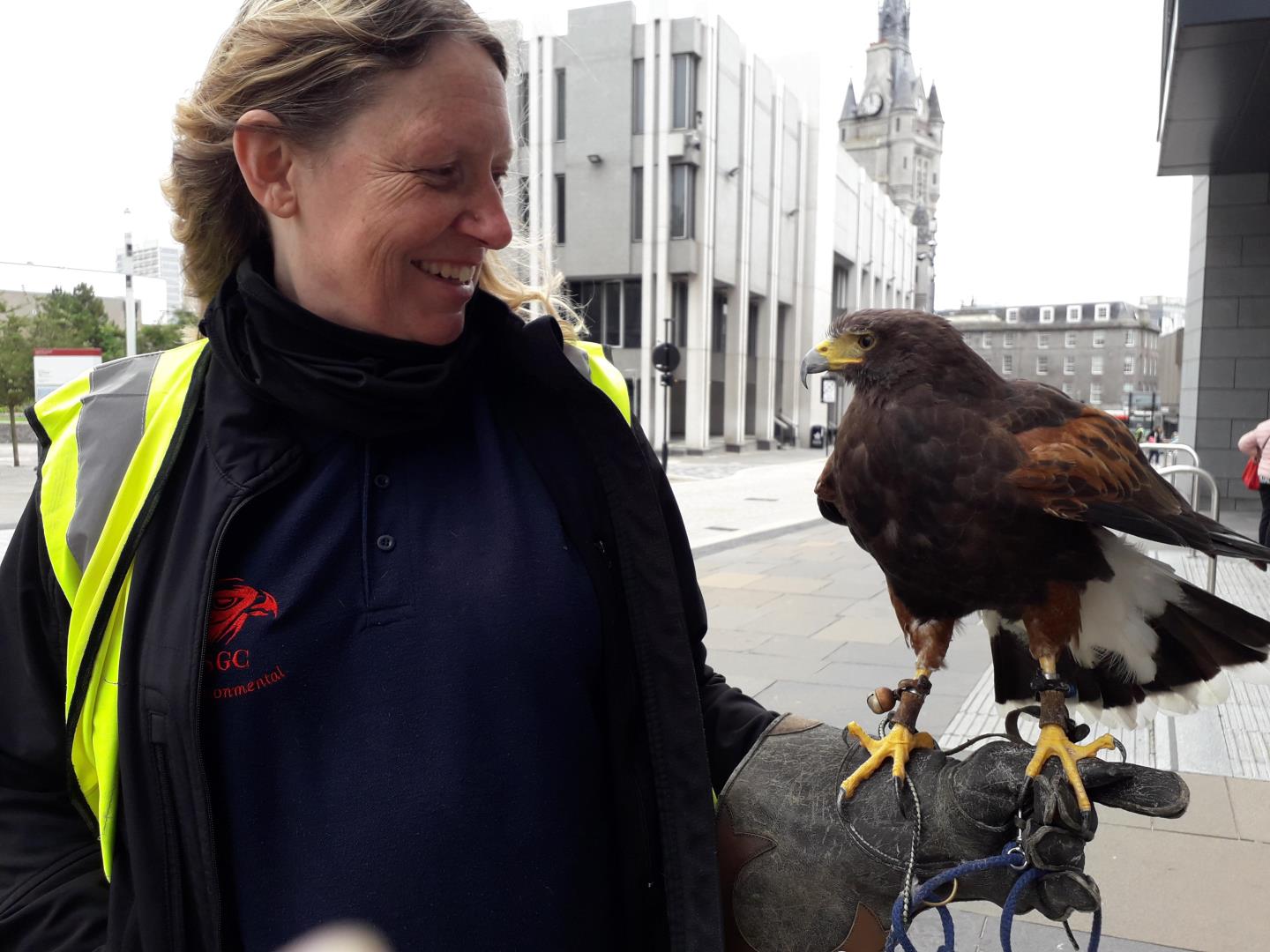Something caught my eye in a giant, blown-up picture of an important royal event plastered on the side of an empty shop unit.
What was the Queen looking at, with a flicker of a frown on her face? She was the centre of attention, yet momentarily so far away as she looked intently at something high above her head.
A set of wonderfully nostalgic pictures at Bon Accord upper mall in Aberdeen celebrated the shopping centre’s official opening; the 31st anniversary has just passed.

The Duke of Edinburgh was seated beside her, but his gaze was drawn in another direction, towards a musical performance in their honour.
It’s a stark contrast to today’s retail landscape, with several shops in the photographs now rendered carcasses by the twin vultures of internet and pandemic. Images supplied by Press and Journal archives neatly bridged the obvious dichotomy between past glories and dreams of economic rebirth after pandemic.
Is the debate about gulls becoming more of a nuisance than the birds?
I have a fantasy theory about what the Queen was looking at. Maybe a foraging herring gull had landed high above her head in the rafters.
City dwellers endure incessant nesting and scavenging racket above their heads every year as gulls invade on their own version of a staycation to raise summer chicks.
Ironically I found myself in nearby Flourmill Lane a few minutes later, being dive-bombed by a pair of gulls in a raging temper.
I had bumped into falconry expert Sarah Calderwood and her sidekick Saffron, who are hired to disrupt and disperse gull hotspots on major buildings.
Saffron, a four-year-old American Harris Hawk, was quite mellow on Sarah’s arm. But the angry gulls – who, let’s face it, can spot a discarded curry from 200 metres – were onto her in a flash.
They screeched down almost vertically, like Stuka dive bombers in the war, so close I could feel the wind in their wings. They are old adversaries apparently, so they gave Saffron a warm welcome.
Saffron, a Spitfire to these Stukas with her 40mph swoop, hardly batted an eyelid; Sarah on the other hand sometimes wears a helmet for protection in rooftop skirmishes.
I tagged along with them as the summer nesting season came to an end, but the perpetual debate about gull nuisance won’t go away.
The pandemic has affected gulls too
Believe it or not, gulls had a tough lockdown, too.
Spare a thought for their mental state as traditional food sources such as bins around catering outlets dried up. And mountains of takeaway food normally dropped in the street by boozed-up revellers.
Some of us actually defy official advice and feed them: I have a guilty secret here.
Every spring, a particularly bold adult gull gets so close it almost taps on our kitchen window. It has a meaningful look and a wink which says: ‘Look at me. I have a wife and kids now, can you put us up for a few weeks?’
A baby gull crash-landed in our garden before it could fly. We didn’t know what to do, so inexplicably provided a wash basin filled with water for it to wallow in and some food. It stayed for weeks.
Now, every spring, a particularly bold adult gull gets so close it almost taps on our kitchen window. It has a meaningful look and a wink which says: “Look at me. I have a wife and kids now, can you put us up for a few weeks?”
I wish I had marked its head with an indelible pen to identify it for future reunions, but I think that might be illegal under bird protection law.
Sadly, I see dead chicks crushed under car wheels; are they all unavoidable accidents? I doubt it, but can’t prove it.
Gulls have evolved and so must humans
Saffron doesn’t kill gulls, which might be a popular misconception. She’s an airborne police officer who persuades the anti-social hardcore to move on.
Sarah, who is Strathdon-based and runs SGC Environmental, also carries out a great ambassadorial role, raising awareness of gull issues as interested passersby stop to talk at ground level on her way to launch sites.
Her decades of experience with birds of prey include performing falconry demonstrations at one of millionaire Peter de Savary’s manor houses – “very uncomfortable in full medieval costume”.
But she respects ingenuity in her gull opponents: she once watched four working as a team to rock and topple a food bin.
Turning back the clock on recent gull evolutionary interaction with humans seems impossible, but issues around waste food and how attractive our roofs are to these birds are the roots of the problem.
I stumbled across a possible exclusive after discovering numerous gulls migrate here for the summer: some mysteriously carry Russian ring tags.
I am not a conspiracy theorist by any stretch of the imagination, but is it possible President Putin bugged gulls to gather intelligence for the Kremlin about Aberdeen’s kebab-eating habits?
David Knight is the long-serving former deputy editor of The Press and Journal


